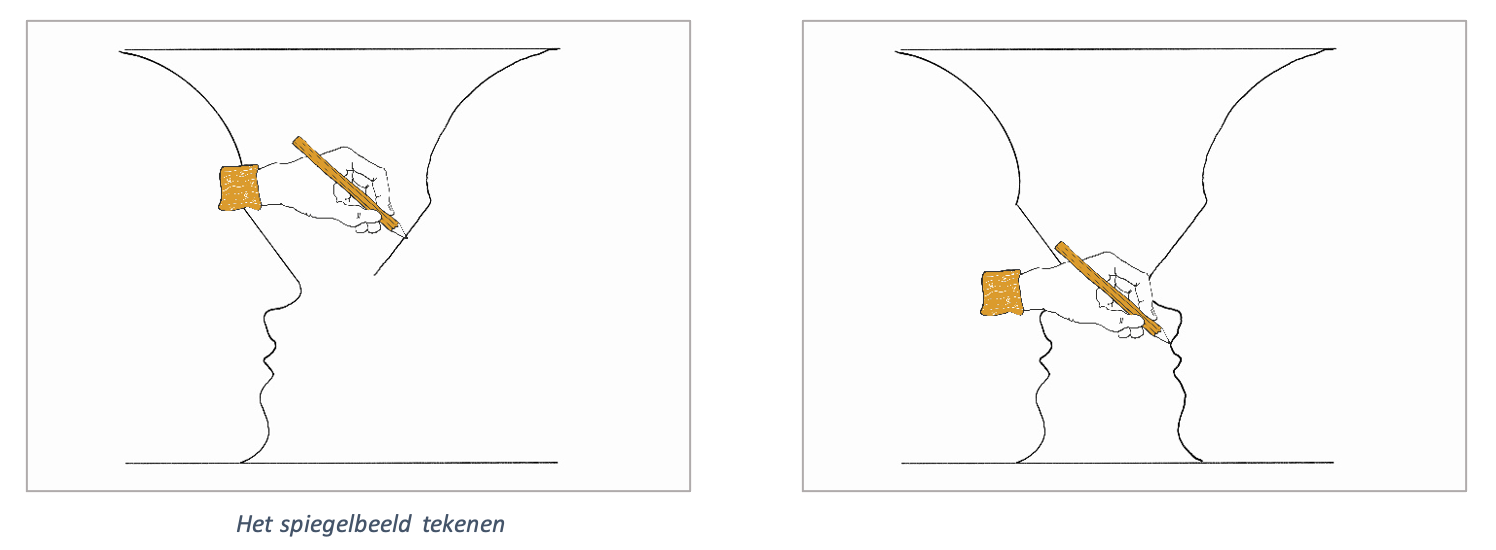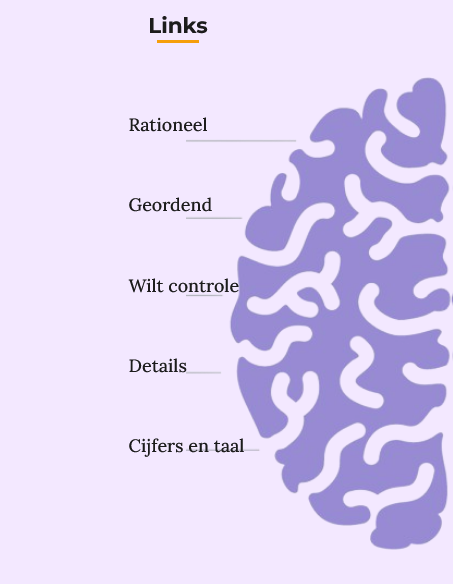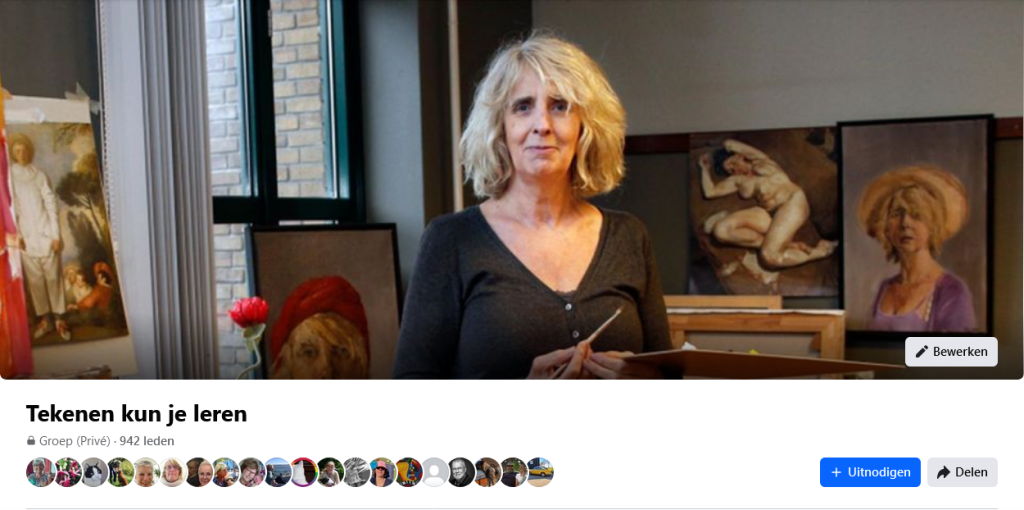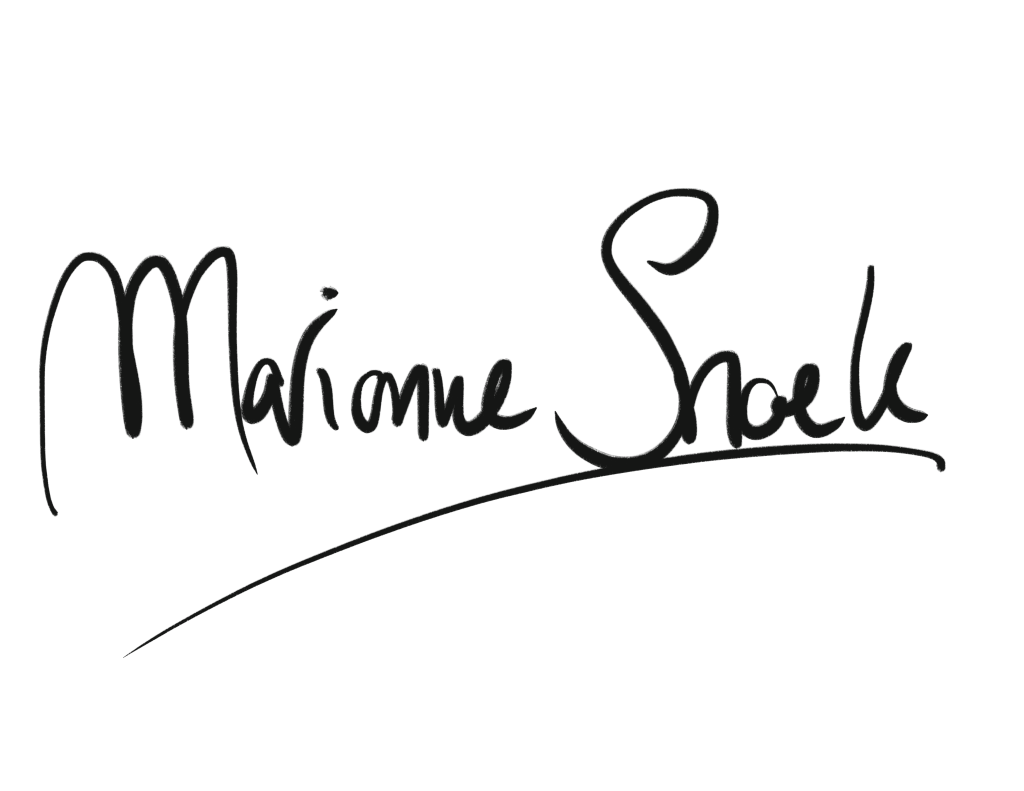Your cart is currently empty!
A last change!

The reason why, after more than 27 years of teaching, I am still very enthusiastic about learning to draw with the right brain is because it changes people’s lives.
One of those lives is Gerda’s.
Gerda has been struggling with drawing for a long time before she came to take lessons with me.
She went from one teacher to another and always came home with a desperate feeling, “I’ll never learn it.”
This wouldn’t be so bad if it weren’t for the deep desire to be able to draw!
It is this drive that keeps her going.
But she is now almost at the point of giving up.
She tells me that I am her last chance.

The left brain cannot draw!
We begin with the first lessons (back then I still taught in person).
We follow the same program as in the book “Drawing on the Right Side of the Brain.”
I explain to the group why the left brain cannot draw.
And why we need to put it in a resting state when learning to draw.
It’s a logical story supported by scientific tests and important scientists.
This is important.
After all, the left brain loves logic and scientific proof. What can be scientifically proven is true for the left brain! (Which is not always the case).
I need all the left brains in the group to agree with what I am doing.
Hence the explanation.

Then everyone starts drawing.
We begin with the vase drawing.
You can also do this here (link).
For me as a teacher, this is an important exercise.
Because here my students have to discover for themselves how to switch from the dominant left brain to the drawing brain: the right brain while drawing.
The better they can do this, the easier it will be for them to learn to draw with the right brain.
Gerda went all in.
She was determined to seize this last chance to learn to draw.
The vase drawing went well for her.
The exercise that follows is Picasso’s upside-down drawing (you can do this here).
I saw how she drew with dedication (which characterised her) and began to relax.
She started to enjoy drawing.
Truly learning to observe
The first day of class (or the first chapters in the book) is just playing around.
A bit like dipping your toe in the water to see how it feels.
Only on the second day do we start with the real work.
Learning to draw is the same as learning to observe.
Whoever can observe well can draw well!
It’s that simple.
To observe well, it is necessary to put the left brain in a resting state.
For many people in our Western society, the left brain is dominant. It is the part of our thinking that ‘thinks’ it can do everything better. Including drawing!
With clever tricks, my students learn to put the left brain in a resting state, and suddenly they start to truly observe. Really see! Really see what is there to be seen.
Good observation = good drawing
This is often a revelation.
We often think we are observing well, but when the left brain is active, we often look superficially. A quick glance, a word to go with it, and that’s it.
This is also necessary: our left brain helps us survive and needs to quickly assess a situation. Then it’s useless if you see all kinds of details that only distract you.
For drawing, it’s the opposite!
You can’t draw what you don’t see! It’s that simple.
Through the exercise of blind contour drawing, you learn to see what is really there.
Then you can draw this too.

Dominant left brain
The dominant left brain also gives us a sense of (false) security.
It is the part of our thinking that prefers to keep everything the same, the familiar.
By learning to observe with the right brain, the left brain loses control.
What can then arise is ‘fear.’
It is the ego that is afraid of losing itself in the unknown, in uncertainty, and in the unexpected.
While Gerda was calmly drawing yesterday, it’s much less so now.
- She is restless (left brain)
- Various emotions come up; such as fear, anger, worry (left brain)
- She struggles with herself
This is nothing new.
The left brain sometimes resists and comes up with all these kinds of emotions.
Then I am there to steer this in the right direction:
- To comfort (the artist is a child)
- To encourage
- To keep the focus

The liberation
Those who continue, who persevere, always reach a point during the lessons (and working through the book) where the brakes come off.
A great freedom and joy in drawing arises.
How does that happen?
Our left brain has a very limited vision.
A vision often detached from the real reality.
Like the image of the little man with a zebra. It is not a real little man, it is a shortened, shrunken, minimised version of reality.
So is looking with the left brain.
Those who learn to draw with the right brain free themselves from this limited vision of the left brain and enter something that connects with you as a person.
Something that draws from who you really are. Your soul.
By putting the left brain in a resting state and freeing the right brain from the dominance of this part of our thinking, you essentially free yourself.
A radiant & enthusiastic Gerda
As the workshop progresses, Gerda’s drawing improves!
Her artist’s soul, which longed for this moment, overflows with joy.
She can hardly believe it; the beautiful, sensitive drawings she creates.
And what a difference.
The fearful, insecure, hurt Gerda has transformed in a few days into a radiant woman who looks with wide eyes at all the beauty that comes from her hands.
Who wouldn’t be happy to witness this?
Everyone can learn to draw!
For everyone who wants to learn to draw, this transformation is possible.
Of the thousands of students who have attended my workshops (and now buy my books link), many started with nothing (ability) to ultimately express their artistic talents in full glory.
Many have gone on to further study at an academy, have their own artist practice, or still enjoy their drawing ability every day, which allows them to express themselves in drawing and painting.

The Follow-Up
When you have learned something – like driving a car or riding a bike – it’s good to practice a lot.
This has a purely physiological (body) reason.
By practicing, connections form in your brain, allowing you to do what you have learned better and better and never forget it.
With this in mind, I created a follow-up program for the Learn to Draw workshop over the years.
Which is now the Workbook You can learn to draw- with the right brain
Here you first repeat everything you have learned (in the basic book).
As every good teacher knows: repetition ensures that you understand everything even better.
Then you start drawing freely where you practice everything you have learned, practice, practice, and practice.
100 consecutive days?
Why 100?
It is scientifically proven that if you do something for 100 days it becomes a habit.
You then want nothing else but to draw (for a while) every day. How fun is that?!
The Workbook You Can Learn to Draw- with the Right Brain is a challenge; for 100 consecutive days, you draw for at least 30 minutes.
To help you keep up with this challenge, we have developed the app “You Can Learn to Draw.”
This helps you with tracking (tracking your progress), notifications, inspiration moments, and finally a reward to keep up with the 100-day challenge.
More information about this can be found on this page.
What is the Moral of This Story?
- Learning to draw with the right brain is fu
- Learning to draw with the right brain is relaxing
- Learning to draw with the right brain teaches you to truly observe
- Learning to draw with the right brain gives you artistic wings
- Learning to draw with the right brain makes you creative.
So, are you still doubting your ability to learn to draw?
Give yourself a (last?) chance like Gerda!
Those who order the Duo Package have everything at home.
You then follow exactly the same program as I have been giving in my Learn to Draw workshops for years.

And you know what?
You don’t have to do it alone.
When you purchase one of the books, you can sign up for the private Facebook group “You Can Learn to Draw.”
Nearly 1,000 people are working with the same book, and you can admire each other’s work, inspire or encourage each other, and ask me a question every day if you want to know something.
Will I see you there?!
I am looking forward to it.

I could just about draw a stick figure.
Karina (Belgium)
Thanks to your books and diligently following the lessons, I have come a long way.
I highly recommend your books and method to anyone who wants to learn to draw.

Leave a Reply